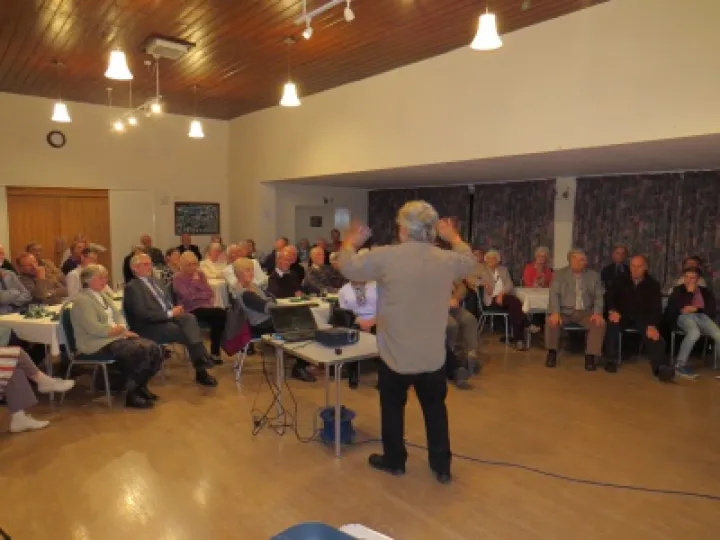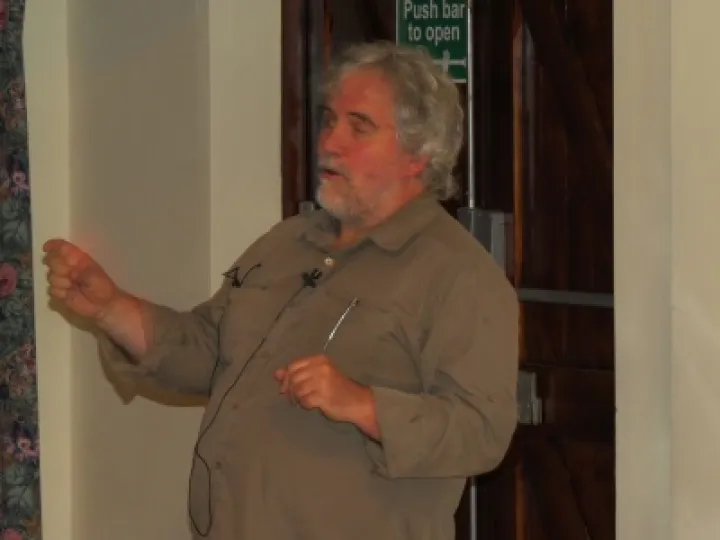Wildlife Photographer visit
One always imagines that being a wild life photographer is a "cushy" job, offering travel to some of the more exotic areas of the world, taking iconic pictures of animals and birds that just happened to be artistically posed awaiting the attention of the camera.
Apparently that is wrong (big time!). Last Friday, Dr. Michael Leach, wildlife author, speaker and photographer gave a fascinating talk at Adderley Village Hall. He explained some of the tricks of the trade that allow him to capture some of the extraordinary photographs and video footage.Many of these are familiar to us on television programmes and in books about wild birds and animals.
He talked about his early career as a free-lance cameraman, providing material for the BBC and other television networks, and now as an author of numerous books on wildlife.
Surprisingly, technical expertise in photography and video cameras is way down the list of skills required for the job. By far the most important is in depth knowledge of the subject material.He and all of his colleagues have at least one degree in Zoology and find the need to specialise in particular types of birds or animals to understand how to get close enough to capture the unusual images.
Patience is another essential skill -on average he expects to capture around 10 seconds of usable footage per week.
Here are a random selection of facts he gave us :
Birds cannot count, except for ravens which can count to 9!
The significance of this is that to tempt a bird to a location where you wish to photograph it, you have to convince it that you have left the scene so you need a stooge to be seen to be walking away whilst you secrete yourself in your hide close to the chosen photo spot. Ravens require a larger number of people to be seen to leave!
Birds have no sense of smell so you don't have to be downwind of them, unlike polar bears which have a highly developed sense of smell which can get you into difficulties if the wind changes direction!
We all love photographs of young animals and birds. Publishers demand them to sell books. Foxes are the most requested subject material so an image of baby foxes gets a high "wow" factor.
So called "exotic" locations such as a rainforest in Borneo become decidely less so after a month being attacked by creepies and crawlies!
Michael spoke for about an hour and a half to an enthralled audience of around 60 people. Our President had to call time on questions to allow us to get home in time for our cocoa.
Many thanks to Roy and Christine Plume for organising the evening and to Sue Clark and her team who provided an excellent supper.
Quick Links
Get In Touch
Superintendent
Rev'd Jane Carter
jane.carter@methodist.org.uk
CIrcuit Administrator
Sue Mason
suemason.bedecircuit@gmail.com



